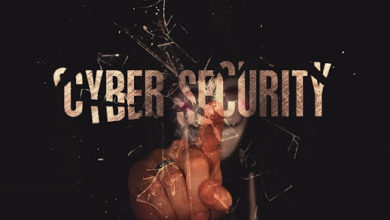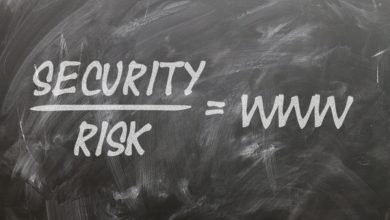Database Essentials – Methods to Follow in Secure Data Destruction and Disposal
KEY TAKEAWAYS
Irrespective of the industry’s size or different types of enterprise operations, modern-day organizations now primarily rely on their data to drive their businesses. Considering collection, usage, transfer, or storage of data, there is one thing which all enterprises have in common is the challenge of what to do with their data once it is no longer needed to be kept. With many data breaches and theft stories, it is important to have a foolproof procedure for data disposal. Here, in this article, we are discussing some of the best practices in secured data destruction.
If there is no structured data disposal policy at your organization or if you are not well versed in secured data disposal practices, you may always be vulnerable to security breaches, which may ultimately impose stiff penalties, losing consumer trust, or irreparable damage to your brand image. To address this, let us first go over the difference between safe data destruction vs. safe data disposal, followed by the time-tested methods to follow in securely destructing and disposing of data. We will also look into some common policies that every organization should follow to adopt and ensure secure data disposal and destruction.
Data Destruction vs. Data Disposal
- Safe data disposal is the practice of securely disposing data from all the devices carrying it, but on the other hand, not getting rid of it completely. When you dispose of the data, it is like putting the files off your computer’s main memory and removing it in the trash. It is still possible to access it if needed, but not in active use.
- On the other hand, safe data destruction is completely wiping the devices to clean off the data. No one, including you or the malicious intruders, may no longer be able to retrieve the data. It will give you the best protection that you require for your business.
The fundamental understanding here is that simply deleting data from the DB may not be enough if you want to make it unrecoverable.
Methods for Secure Data Destruction/Disposal
While determining the method to use in secure destruction or disposal of enterprise data, you may have to first consider the four primary factors about the data:
- Type of media
- The sensitivity of data which is considered for disposal or destruction.
- The data asset’s end-of-life value and
- All the information security frameworks and legal obligations pertaining to the data.
Once you have effectively factored in these considerations, you may further decide which of these below-mentioned methods can be adopted based on your organization’s unique requirements. For more insights and inputs regarding the same, you may seek services from RemoteDBA.com.
Destroying hard drives
To securely get rid of or dispose or destruct of the data stored on hard disk drives (HDDs) or any other physical location, you may consider the following approaches.
- Clearing: It will remove the stored data to prevent the end-users from accessing or recovering the same. This approach is an idea for reusing the devices internally in the organization.
- Digital Shredding: It is also called wiping, which does not alter any physical asset. On the other hand, it will overwrite the data with other random characters or 1 or 0, having multiple passes (for example, the algorithm of DoD 5220.22-M).
- Degaussing: This mode uses a magnetic field to distort and rearrange the HDD structure. The degaussed HDD cannot be used further, and data cannot be retrieved.
- Physical Destruction: The HDDs are crushed or shredded mechanically so that the data cannot be retrieved.
To securely destroy the Solid-State Drives, you may try the below approaches.
- Sanitization Commands: Effective to try out when the device needs to be reused internally in the organization.
- Encryption of physical destruction: This is an ideal way to ensure that the device data cannot be recovered.
Enforcing data disposal policy
To enforce and ensure secure data destruction and disposal, you should have the right policies and practices in place. All the employees dealing directly with the databases or using various database applications must be well-versed in the best practices to follow in database disposal and destruction. However, if you maintain some flat policies that do not reflect the business requirements, there is no scope for holding the users accounting for the same.
So, for this reason, while you create, maintain, and enforce a data disposal policy, it should contain the following aspects too:
- Define the personnel who is responsible for overseeing the data destruction and disposal process.
- Define the best practices which each level needs to follow in ensuring secure data destruction and disposal.
- Define what needs to be done with different media devices that are no longer useful but need not be destroyed.
- Include all the requirements to update the assets and inventory lists.
- Address the non-compliance with data and equipment disposal policies.
To build a solid disposal and destruction policy, you may refer to the governing bodies’ policy templates like SANS. You may also consider seeking help from third-party providers if you are not proficient in establishing and enforcing data and equipment disposal policy. Some expert providers are well-versed in these tasks and can provide you with certificate proof and assure that your devices are handled properly, and ensure that the devices are fully restored or physically destroyed as specified.
So, all in all, it is essential to have a solid and foolproof data and equipment disposal and destruction policy that contains the best practices in secure data destruction and secure data disposal. This has to be made an integral component of an organization’s data policy and to be practiced diligently to establish a culture of compliance internally in the organization and extend the same to external users, associates, and stakeholders. By doing this, you are only positioning your business as trustworthy and can put it forth as proof of your integrity, which had become much tough in the current data-centric world.





